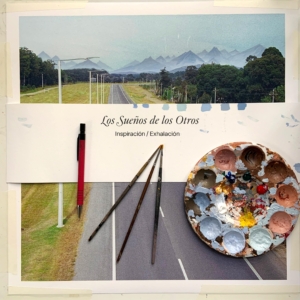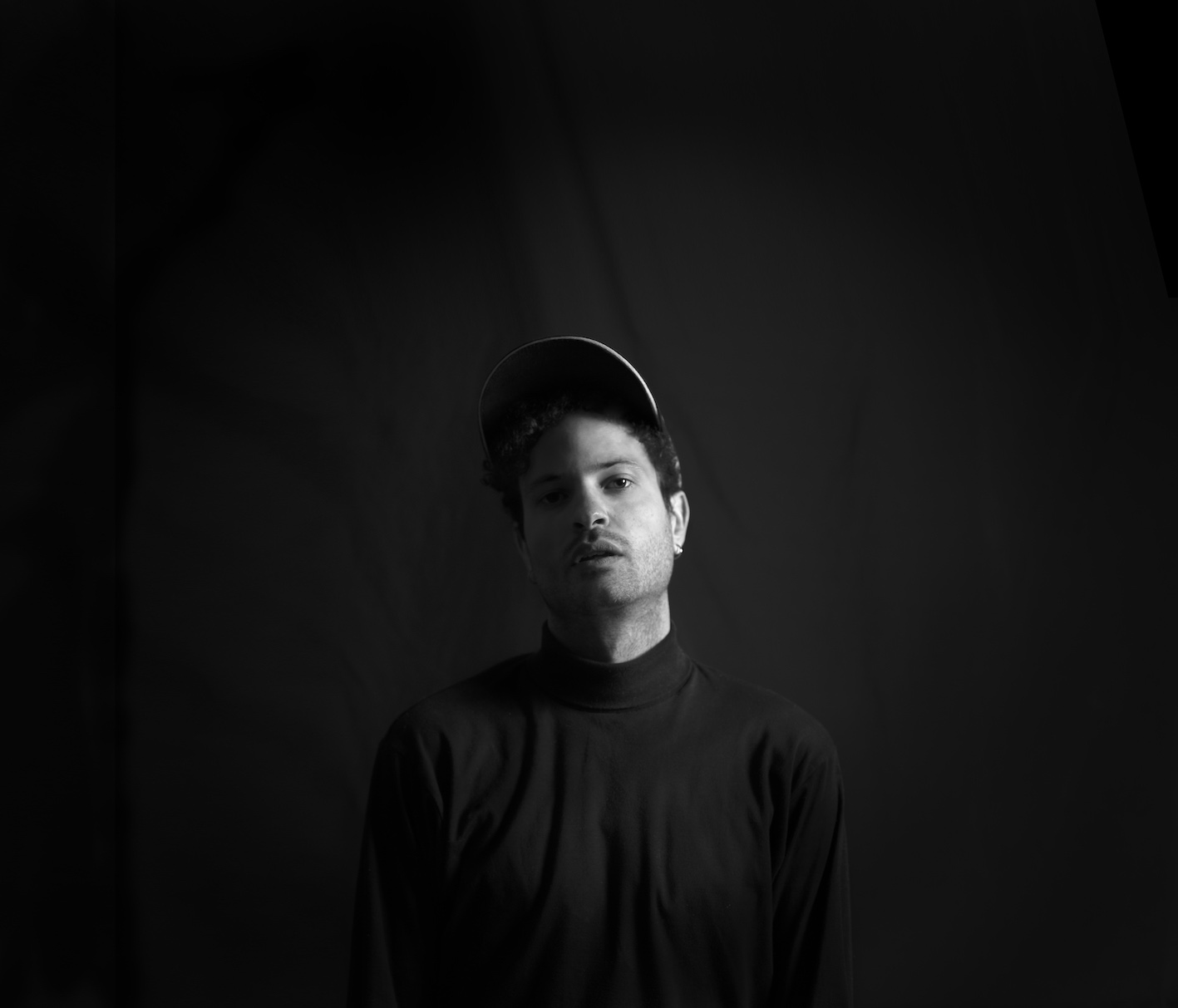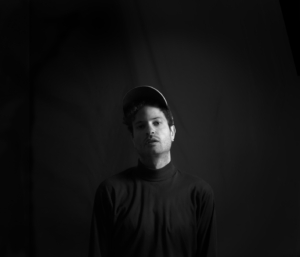シンガーソングライターでありながら、管弦以外のほぼすべての楽器を演奏しアレンジまで手掛けたその才能は底が知れない。祝祭的なホーンやコーラスが高らかに鳴り響く冒頭曲からその世界に引き込まれる。トロピカルかつ涼しげな、記憶の中の美しい夏を感じさせる70年代的ノスタルジアなサウンドやソングライトなのだが、その音像はあくまでも2020年代的だ。Sufjan StevensやFleet Foxesらとも共振する、南米という枠を超えて幅広く聴かれるべき才能の出現と言って過言ではない。ウルグアイ出身の若手シンガーソングライターのデビュー作ながらブラジルのTim Bernardes (from O Terno)の名作『Recomeçar』を彷彿させるオーケストラル・ポップの大傑作として話題になったマリアノ・ガジャルド・パーレン(Mariano Gallardo Pahlen)の2020年作『Los Sueños de los Otros』が待望のLP化となる。オーストリア出身の著名な指揮者、Kurt Pahlenの孫という音楽家の家系に生まれた彼の名前を知ったのは、ウルグアイを代表する若手ジャズ・ベーシスト、Antonino Restucciaの2020年作『Otro Camino』にピアニストとして参加していたことがきっかけだったが、ジャズ・ピアニストとして認識するやいなや、同年にデジタル・リリースされたのが本作だったため、作品の内容の素晴らしさとともに、その両極的な才能のあり方に大いに驚かされた。アルバムのリリースから約2年、LP化を記念しマリアノのインタビューを掲載する。詳しいプロフィールは高橋健太郎さんによる本作のCD版のライナーノーツを参照いただくとして、早速インタビュー本文へと進もう。
INTERVIEW :
Text:宮本剛志 (Takeshi Miyamoto)
編集:山口隆弘(OTOTSU 編集担当)
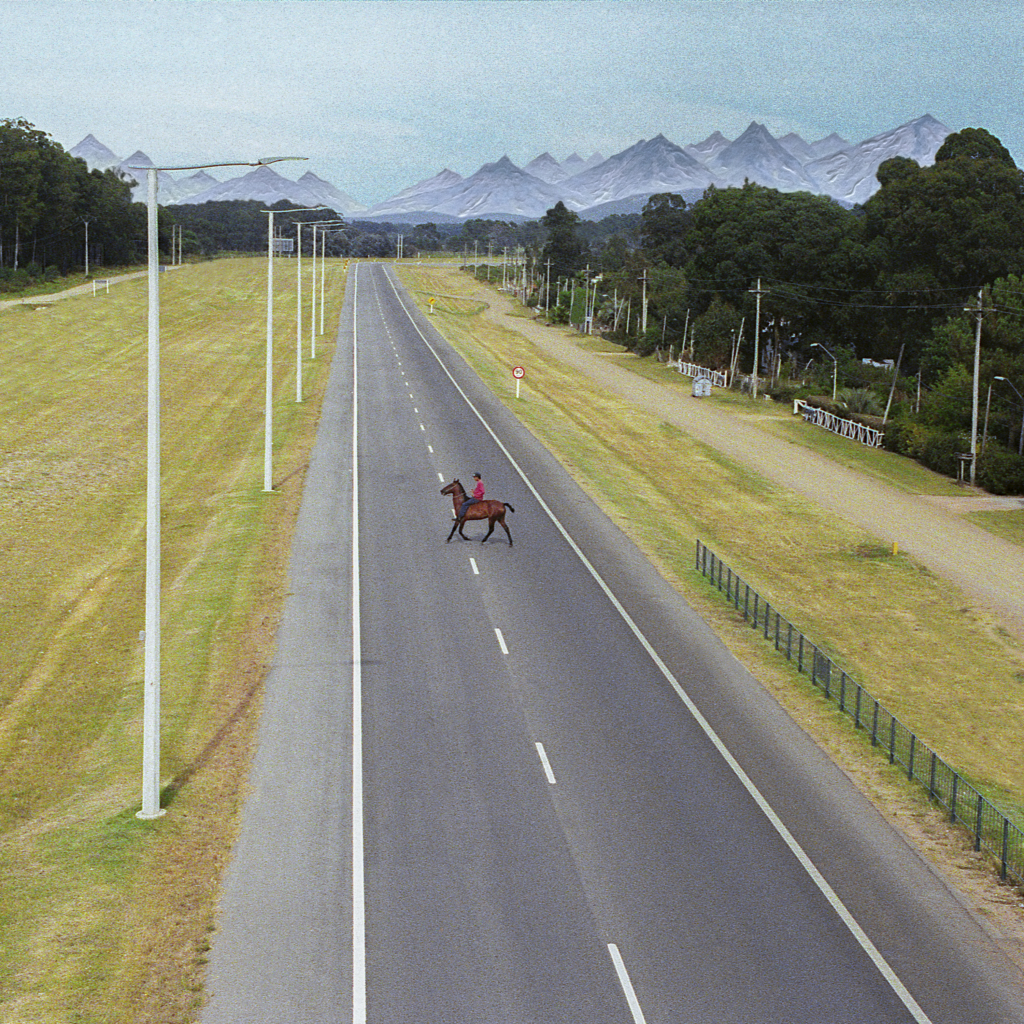
Mariano Gallardo Pahlen
『 Los Sueños de los Otros 』
2021年6月2日発売 / LP入荷未定
品番:THCD580
レーベル : THINK! RECORDS
■世界初CD化
■ライナーノーツ:高橋健太郎
ー現在のウルグアイの音楽シーンと、あなたの音楽家としてのキャリアについて教えてください。
マリアノ・ガジャルド・パーレン *以下省略 ‐ウルグアイの音楽シーンは、この国に住む人々の数や、音楽市場の規模に対して驚くほど盛んです。音楽に専念した職業でなくても、音楽活動をする人がたくさんいるので、それが非常に幅広く豊かな芸術的表現を可能にしているのです。私個人としても、インディー、ジャズ、アーバン、クラシックなど、多くのシーンに関わり音楽を楽しんでいます。
音楽家の家庭に生まれた私は、幼い頃から音楽に関するあらゆるものに囲まれてきました。子供の頃から楽器を演奏し、10代でバンドを結成し、ジャズ、ロックからウルグアイ、ブラジル、アルゼンチンのポピュラー音楽、そしてアカデミックな音楽まで、常に様々なジャンルに興味を持ち探求してきました。私の音楽についての学びは、ギターの個人レッスンから始まり、短期間ですが大学の音楽学校に通い、その後、様々なジャンルのミュージシャンとバンドを組み、自分の曲を演奏するようになりました。長い間、モンテビデオのインディー界隈でライブをしながら、同時に、自分のアルバムに収録することになる様々な楽器の演奏も独学で学んでいったんです。
ー Tell me about the Uruguayan music scene these days and about your own career in music.
Mariano Gallardo Pahlen – The Uruguayan music scene is remarkably prolific for the number of people who live in the country and for the market perspective there is around music. We have a ton of people dedicated to it without it being their main professional activity, which allows for a wide range of very rich artistic expressions. Personally, I engage with and enjoy many of the areas of the current scene, be it indie, jazz, urban or classical music.
My career as a musician starts at home, with me being born into a musical family, surrounded by everything that that entails from a very young age. I started playing instruments as a kid and forming bands as a teenager, always curious about and exploring many genres. From jazz, to rock, to Uruguayan, Brazilian and Argentinian popular music as well as academic music. My training started with my guitar lessons from private teachers, then for a short period, I attended the University’s School of Music, and then I started forming bands to play my songs with musicians from various different genres. For a long time I played live on Montevideo’s independent music circuit, while at the same time teaching myself to play the rest of the instruments that I later ended up recording on my album.
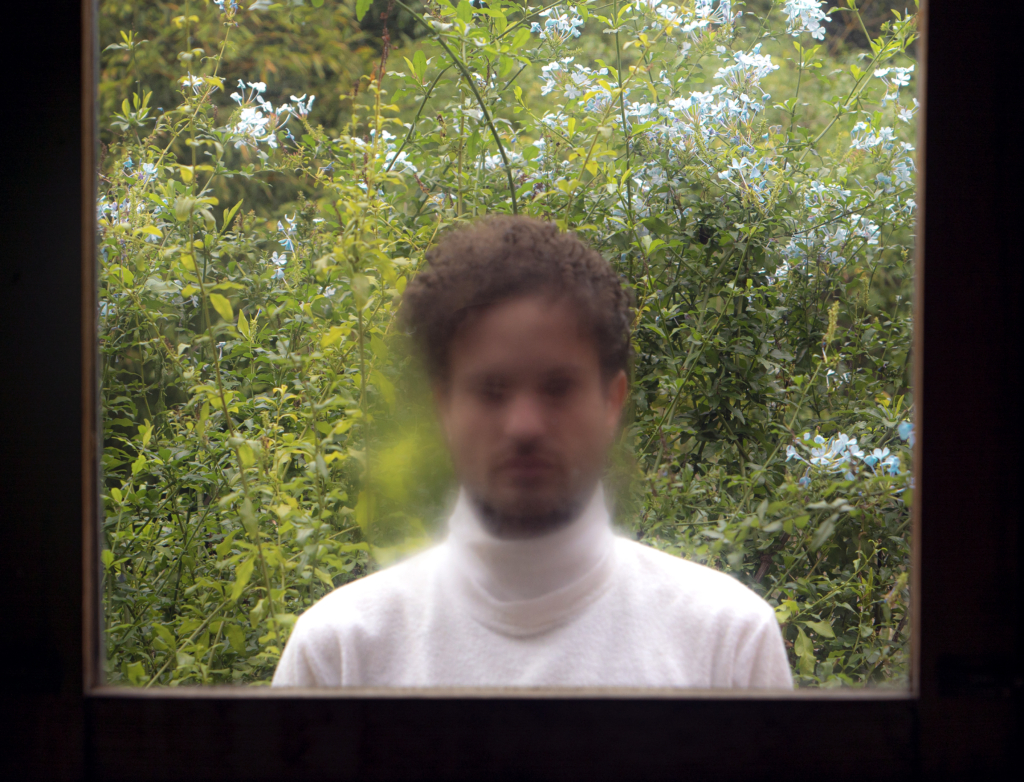
ー アルバムのレコーディングのプロセスはどのように行われたのですか?
それは長く、大変な集中力を必要としました。本当にやると決めた瞬間から、完全にそのことに注力したんです。このアルバムの作曲、制作、レコーディングに私の創造的なエネルギーのすべてを捧げることができるように、他の音楽的なプロジェクトはすべて中断し、コーヒーショップで働くようになりました。またこれは私にとって初めてのレコードだったので、探求するプロセスにもなりました。調査し、学び、自分自身を知るための作業だったんです。一人でいること、一人で過ごす方法を学ぶこと、その両方がこのプロセスで大きな役割を果たしました。
まず最初のステップは、最終的にアルバムに収録されるアレンジを含む、非常に精密で詳細なデモを自宅で録音することでした。その後、レコーディング・スタジオに行き、サウンドエンジニアリングに注意しながら、デモ音源とスタジオで録音した音源を1曲ずつ入れ替えていきました。ピアノは自宅で録音したのですが、チェンバロのようなウルグアイでは珍しい楽器は、どこにあるのかをまず調べる必要すらありましたね。これらの録音の裏には、興味深い物語がたくさん隠されていて、まるで冒険譚のようなものです。スタジオでのレコーディングの段階では、管楽器や弦楽器の演奏家、それにヴォーカリストなど、音楽家仲間に声をかけて一緒に演奏してもらっています。
ー How was the album’s recording process?
It was long and hard-focused. From the moment I decided I was really going to do it, I put my mind on that entirely. I left all of my other projects hanging and got myself a job at a coffee shop to be able to devote all of my creative energy to the composition, production, and recording of this album. It was my first record, so it served as an exploratory process. I investigated, learned, and got to know myself working on it. Being alone and learning how to spend time on my own both played a big role in this process.
The first step was recording, at home, very precise and detailed demos of the songs, including all the arrangements that would eventually make it to the album. Then I went to a recording studio and I started replacing, one by one, the demo tracks for the studio ones, carefully paying attention now to the sound engineering. The pianos were recorded at home. With instruments like the harpsichord, for example, I had to carry out an investigation about where to find them. There are many interesting stories hiding behind these recordings: I lived them as adventures. At this stage, too, I called fellow musicians to collaborate playing wind and stringed instruments, and also some voices.
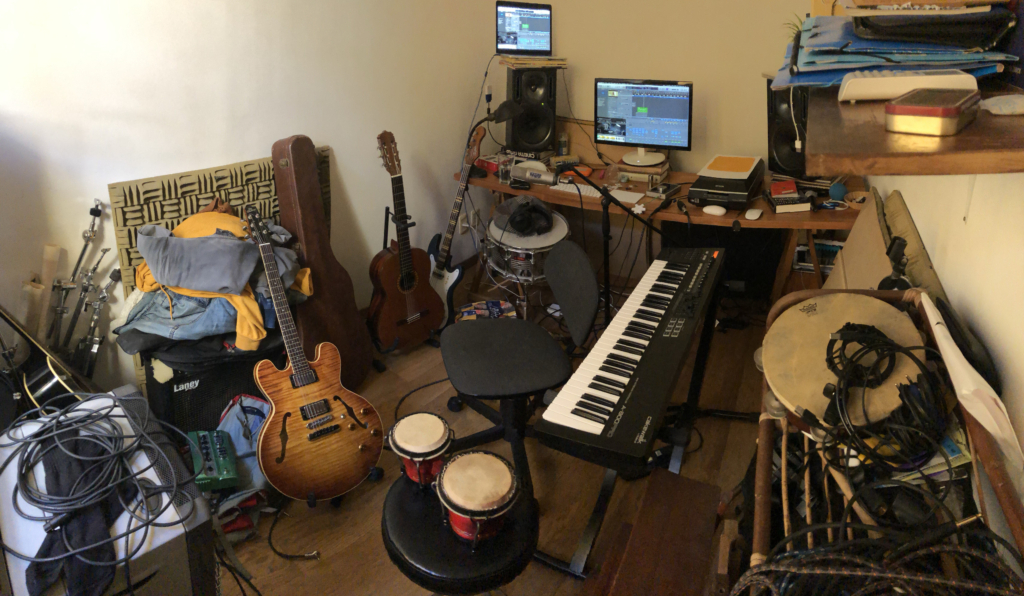
ー 作曲と編曲はどのようにおこなっているのでしょう?
決まったやり方はありません。ギターやピアノから作曲することもありますし、楽器ごとに異なるパートを作曲することもある。この一連のプロセスは、とても直感的なものでした。アルバムの最初の5曲はすでに作曲していましたが、後半の5曲はデモを録り始めてから思いつきました。そのため、その時々に自分が経験しているテーマを語ることができ、アルバムに現代性と新鮮さを与えることができました。曲の一部をアレンジしているうちに、そのアレンジが一人歩きして、ひとつの曲になることもあります。これは、私がひとつひとつのアレンジに時間をかけ、ひたむきに取り組んでいるからこそ起こり得ることなのです。
曲を作る過程で繰り返し聴いていると、どんなフレーズ、リズム、テクスチャーが他の演奏と合うか、聴きながら推測するようになります。これは、アカデミックな曲を聴くときに、楽器の活用や関係性に特に注意して聴くことも連想させます。私は小さい頃から自分の曲のパートや楽器をすべてアレンジしてきたので、ほとんど自然にできることなんです。もうひとつは、アレンジを探すときに楽器を変えてみることです。そうすることで、それぞれの楽器がどんな提案をしてくるのか耳を傾けることができます。それは非常に多様なんです。
アレンジは何時間もかけて検討し、磨き上げていきます。そのため、時には外の世界よりも曲の世界に入り込んでしまうこともあります。そのような状態になったとき、本当に満足のいくアレンジが完成するのです。
ー How do you work out the music’s composition and arrangements?
I don’t have a fixed way of doing it. I can compose from the guitar or from the piano, or sometimes I compose different parts on each instrument. This whole process was very intuitive. I focused on the study of harmony and orchestration after I finished this album, while all this work is done by ear and intuition. The first five songs on the album were already composed, while the second five came up once I had already started recording the demos. This gave the album something current and fresh, as I was able to talk about themes that I was going through at the time. Sometimes I’m composing the arrangement of a part of a song and that arrangement ends up taking on a life of its own and becomes a song in itself. This can happen because of the time, dedication and attention I put into each arrangement.
When I repeatedly listen to the song in the process of creating it, I start listening and guessing what phrase, rhythm or texture could fit with the rest of what is being played. I associate this with listening to academic pieces, paying special attention to the conjugation and relationship between the instruments. I’ve been arranging all the parts and instruments of my songs since I was very young, so it’s something that almost comes naturally to me. Another thing I try to do is to change instruments when looking for arrangements. By doing this, I listen to what each instrument proposes to me, which is always very diverse.
I spend many hours reviewing and polishing up the songs. That means that I get to the point sometimes where I am more immersed in the world of the song than in the outside world. When I achieve that state is when I am really satisfied with the arrangements that appear.
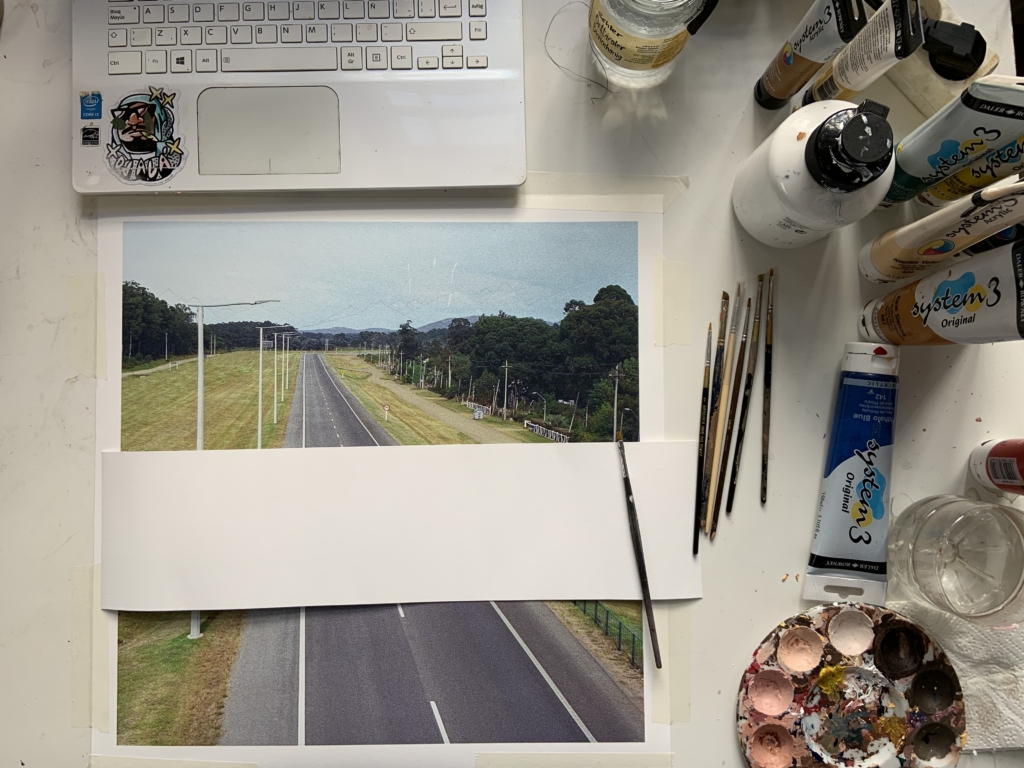
ージャケットのアートワークに強い印象を受けました。その背景になにかエピソードがあればぜひ教えてください。
その背後には美しい物語があります。このジャケットは、私が数年前に撮った本物のアナログ写真です。ある夏の日、ウルグアイの「内陸部」の田舎でありながら沿岸地域に友人たちとサイクリングに出かけることにしました。この国の海岸沿いの町の多くを結ぶ道路、Ruta Interbalneariaを含む、かなり長い距離を走ることになったんです。夜明けに出発するのも冒険のひとつでしたね。途中、道路をまたぐ橋にぶつかったんですが、その橋からこの写真を撮りました。多くの人は、これをフォトモンタージュだと思うかもしれませんが、そうではありません。馬と騎手が実際に通りかかり、その瞬間に撮影したものです。私は、この写真に何かを呼び起こす、象徴的なものを感じました。
その後、THEICとも呼ばれるウルグアイの芸術家、Camilo Núñezに、遠景に嵐のような山々を描いてもらえないか、と頼みました。THEICはそれを描くことに同意してくれましたが、彼はもうすぐ旅に出るので、海外で絵を描くことになる、と説明しました。面白いことに、彼は私の祖父の出身地であるウィーンに行く予定だったので、どういうわけかこのジャケットはある種の起源と結びついたような気がします。描き終えた絵は、アルバムの発売日に間に合うようにと申し出てくれ、ウルグアイの写真家Fernanda Montoroの手で再び海を渡りました。幼い頃から祖父を訪ねてヨーロッパを旅してきた私にとって、このアルバムのジャケットがどのように大洋横断の旅をしたのか興味をそそられますね。
ーI had a strong impression looking at your cover artwork. What’s the story behind it?
There’s a beautiful story behind it. The cover art is a real, analog photo that I took some years ago. It was on a summer day, in Uruguay’s “interior”, meaning countryside, in a rural but coastal area. We decided to go on a bike ride with a group of friends; a fairly long stretch that included pedaling the Ruta Interbalnearia, the road that connects many of the country’s coastal towns. Part of the adventure was to start this trip at dawn. On the ride we bumped into a bridge that crossed over the route. We went up to it and from there I took this picture. Many people think it is a photomontage, but it is not. The horse and his rider were actually passing by: the click was just at the right moment. I found the image very evocative and loaded with symbolism.
After that I asked the Uruguayan artist Camilo Núñez, also known as THEIC, if he could paint some mountains in the distance, with stormy peaks. THEIC agreed to paint them, but explained that he would be leaving on a trip very soon, so he would have to paint outside of Uruguay. Interestingly enough, he was going to Vienna, the city where my grandfather is from, so somehow I feel that the cover became linked to a certain kind of origin. After he finished painting it, the cover crossed the ocean again in the hands of Fernanda Montoro, Uruguayan photographer, who kindly offered to bring it back so that it would arrive in time for the album’s release date.
As I have traveled to Europe since being a little child to visit my grandfather, I find it intriguing to see how the album cover also made transoceanic trips before being published.
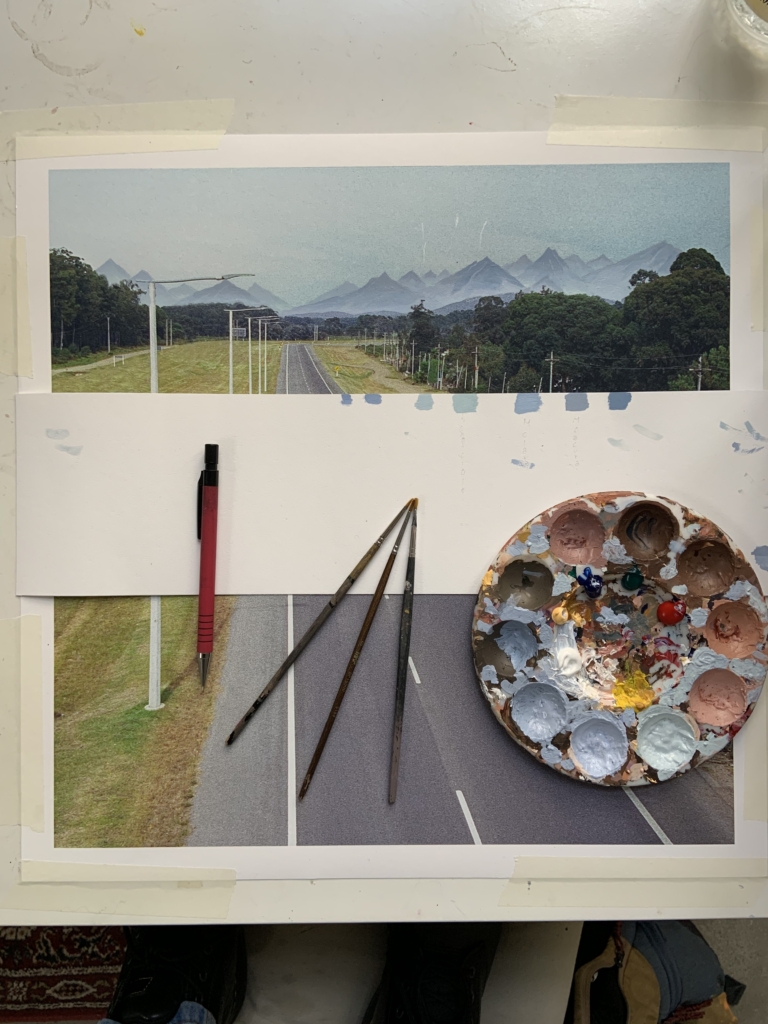
ー あなたの祖父であるKurt Pahlenは著名な指揮者でしたが、彼からなにか影響を受けたりしましたか?
もちろんです。祖父は指揮者であるだけでなく、本を書いたり講演をしたりと、音楽を広める活動も非常に精力的に行っていました。祖父の世界は音楽を中心に成り立っていたので、祖父を訪ねたときは私もその世界に没頭しました。
私は5歳のときから、7月になるとスイスに行き、彼のもとを訪れていたのですが、ちょうどその月、彼は毎年スイスの村で「子ども週間」と称して、子どもたちによるオーケストラを指揮したり、視覚芸術やダンスなどについての活動もしていました。 このことが、私の幼いころからのヴィジョンを形作ったといえるでしょう。祖父はチューリッヒのオペラ劇場のボックス席を持っていて、私たちもその劇場に連れて行ってもらいました。その経験は私を驚かせ、魅了しましたね。
祖父は、ダンサーであり振付師でもある母にも、音楽に対する情熱と味わいを伝え、同時に、私と同じ音楽家である兄にも伝えてくれたのでしょう。大の音楽好きであった父と合わせて、この二人の存在は、私と音楽の関係において非常に大きなものでした。
ーYour grandfather was a famous orchestra conductor. Do you feel he influenced you in some way?
Absolutely. My grandfather was not only a conductor, but he also developed a very rich activity around the dissemination of music, writing books and giving lectures. His whole world revolved around music, so when I visited him, I was immersed in that world, too.
When I was five years old I started traveling to Switzerland in July to visit him. Precisely in that month he carried out, annually, what was called the “children’s week” in a Swiss village, in which he conducted a children’s orchestra along with other activities related to visual arts and dance. This shaped my vision from an early age. My grandfather had a theater box at the opera in Zurich where we would also go when we visited him. The experience frightened and captivated me on the same level.
He must have also transmitted the passion and taste for music to my mother, who is, among other things, a dancer and choreographer, and who, at the same time, also transmitted it to my brother, a musician like me. Together with my father -a major music lover-, both of them were very significant when it comes to my relationship with music.
― あなたの音楽はこれまでのウルグアイの音楽と全く違う印象を受けました。商品ページのテキストでは、以下のアーティストがあなたと共通点があると書いていますが、実際にそれらの影響はありますか?
Tim Bernardes / Sufjan Stevens / Fleet Foxes / Alexandre Andrés / The Beatles / The Beach Boys
The Beatles、The Beach Boys、Fleet Foxesは私が最もよく聴いたものであり、私はそれらの影響を受けていると感じています。Tim BernardesとSufjan Stevensは知っていますが、アルバムのレコーディング時には聴いていませんでしたし、Alexandre Andrésは聴いたことがありません。
The Beatlesは幼い頃から聴いていて、彼らのディスコグラフィーはすべて知っています。実際のところ、専門家のようなものだとすら言えるかもしれません。The Beach Boysでは、『Pet Sounds』というアルバムが特に好きです。あのアルバムには、自分の音楽に似たようなオーケストレーションとサウンドのアレンジ方法があると思います。Fleet Foxesは私がとても好きなバンドであり、特に3rdアルバム『Crack-Up』は、私にとって非常に豊かでやみつきになる作品ですね。
ー It seems to me that your music is very different to everything else being made up to this point in Uruguay. In a review of the web page it is mentioned that the following artists have something in common with you, regarding styles:Tim Bernardes / Sufjan Stevens / Fleet Foxes / Alexandre Andres / Beatles / Beach Boys
Do you recognize them as influences?
The Beatles, The Beach Boys and Fleet Foxes are the ones I’ve listened to the most, and I feel I do have their influences; I know Tim Bernardes and Sufjan Stevens, but I hadn’t heard them at the time of recording my album, and I haven’t listened to Alexandre Andres.
I started listening to The Beatles when I was very young, and I’m very familiar with their entire discography. In fact, you could say I’m something of an expert at it. From The Beach Boys I especially like the album Pet Sounds. I think that album has an orchestration and a way of arranging sounds that can be similar to how I worked on my own music. The Fleet Foxes are a current band that I like a lot, particularly their third album, “Crack Up”, which is to me an enormously rich and risky work.
ー ウルグアイのアルバムで、あなたに影響を与えたものをいくつか選んでいただけますか?それから、あなたのアルバムにおいてウルグアイ音楽的といえる要素はあるのでしょうか?
ウルグアイのレコードで、私に大きな影響を与えたものをいくつか挙げることができます。しかし私は、影響力を単純な方法で処理するのはあまり好きではありません。影響を受けたレコードから、私はそれらの性質のようなものを抽出したのでしょう。
一番好きで、自分の音楽のルーツでもあると思うのは国民的音楽家Eduardo Mateoです。『Mateo solo bien se lame』や『Cuerpo y Alma』といったアルバムは、私にとって重要な作品です。また、彼がRuben RadaやUrbano Moraesと一緒にやっていたバンド「El Kinto」もそうですね。Hugo Fattorusoの『Homework』も重要な作品です。ウルグアイのポピュラー音楽の偉大な表現者であるRadaの歌とJaime Roosの歌も、私の心に寄り添い、親しみを感じさせるものです。そして、Jorge Drexlerのアルバム『Sea』と『Eco』において、ほとんどのアレンジとプログラミングを手がけているLuciano Supervielle。彼自身のソロ活動においても発展させたLucianoのアレンジや感性は、私の音楽の聴き方、見方にも大きな影響を与えています。
質問の後半ですが、ウルグアイの音楽家は非常に良いリスナーであるという特徴があると思います。アルゼンチン、ブラジルという巨人ともいえる2つの大国に囲まれた小さな国なので、私たちはその両方向だけでなく、世界の他の地域にも耳を傾ける能力を発展させてきたのではないでしょうか。これこそが、ウルグアイの音楽の大きな要素かもしれません。不思議なことに、私の音楽のどこがウルグアイ的なのか、自分でも正確に特定することはできませんが、アルバムを聴いた多くの人が、その土地の香りとして、何らかの固有の要素においてウルグアイ的だと認識してくれています。
ー Can you choose some albums from Uruguay that have influenced you? Does your album have any of those influences? Or may I ask, does your album have any characteristic of Uruguayan music?
I can name some of the Uruguayan records that have had a great amount of impact on me. I don’t really like working with influences in a very straightforward way. These records that have had their influence on me —I must have extracted something like their character.
The national artist I like the most and that I feel I hold in my musical roots is Eduardo Mateo. Albums like “Mateo solo bien se lame” or “Cuerpo y Alma” are crucial for me. Also his band “El Kinto”, which he shared with Ruben Rada and Urbano Moraes. Hugo Fattoruso’s “Homework”. Rada’s songs and Jaime Roos’s, two of the greatest exponents of Uruguayan popular music, are also close to my heart and ring familiar. And the albums “Sea” and “Eco” by Jorge Drexler, in which Luciano Supervielle works most of the arrangements and programming. Luciano’s arrangements and sensitivity, which he also developed in his solo career, have also been a great influence in how I listen to and how I see music.
Regarding the second part of the question, I think Uruguayan musicians have the characteristic of being very good listeners. Being a small country surrounded by two giants like Argentina and Brazil, we have developed the ability to listen in both directions, as well as to the rest of the world. This might be an element of Uruguayan music. Strangely enough, although it is not possible to identify precisely what are the Uruguayan features in my music, many people recognize it as Uruguayan in some inherent component, as the aroma of a place.
ー ピアニストとして参加していたAntonino Restucciaのアルバムについて教えてください。あなたはインディーとジャズの両方のシーンで活動しているのでしょうか?個人的にはブラッド・メルドーやシャイ・マエストロの影響をあなたのピアノから感じましたが、具体的には誰から影響を受けているのでしょうか?
私は国内の音楽シーンの中で、とても特殊な場所にいるんです。ジャズ・プレイヤーにとってはポピュラー音楽のミュージシャン、インディー・シーンではジャズの影響を受けた人、アカデミックな世界でもそのような人というように。インディー・シーンのミュージシャンとも、ジャズ・ミュージシャンとも、アーバンのジャンルのミュージシャンとも、ロック・ミュージシャンとも、アカデミックな世界の人とも、とても仲がいいんです。そういう人たちとのコミュニケーションの橋渡しができることは、私が大切にしていることです。私は特定のシーンに囚われることは決してなく、どのジャンルにも縛られず、自分のスタイルを作っていく、このやり方が一番しっくりくるんです。
Brad Mehldauは一番好きなピアニストですが、Shai Maestroはほとんど聴いていませんね。Antoninoの音楽は、Shai Maestroのスタイルの何かと相性がよかったから、そんな風に影響が感じられるのかもしれません。またAntoninoとその作品に参加したドラマーであるJuan Ibarraが、アルバムのレコーディング時にShai Maestroを聴いていたので、それが何らかの形でAntoninoの作曲に反映されているのでしょうね。私はあまり強い直接的な影響を受けないようにしているんです。現代のピアニストで好きな人を挙げるならVíkingur Ólafssonでしょうか。それから私はMaurice Ravelのシンプルな曲から呼び起こされるエモーションに、ピアノだけでなく作曲も影響を受けていると思います。
ー About Antonino Restuccia’s album in which you participated as a pianist: Do you participate in the indie scene as well as the jazz scene? I feel that your piano playing style is influenced by Brad Mehldau or Shai Maestro. Is that correct? Who do you feel influenced by?
I’m at a very particular place in the national music scene. For the jazz players, I am a popular musician; for the indie scene, I am someone with jazz influences, and so on with the academic world, and so forth. I get along very well with musicians from the indie scene, as well as with jazz musicians, urban genre musicians, rock musicians and academics. I maintain bridges of communication with all of them and that’s something I treasure. I never shut myself to a particular scene and I feel at ease this way, without being tied to any genre and creating a style of my own.
Brad Mehldau is one of my favorite pianists today, but I hardly know Shai Maestro, almost not at all.
I think that Antonino’s music was a good fit for something in Shai Maestro’s style and that’s why you can hear such influence. Antonino and Juan Ibarra, the project’s drummer, were both listening to Maestro at the time of the album recording, so in some way this can be reflected in Antonino’s composition. I really do try not to work with very strong, direct influences. If I had to name a current pianist that I really like I would name Víkingur Ólafsson. I think my main piano influences can be the compositions as well as the emotions evoked by some of Ravel’s simple pieces.
ー 今後の予定について教えてください。
現在、アルバムの発表ライブを準備中です。私はまだ自分のソロ名義でライブを行ったことがないのですが、このライブでは、自分が快適とするものから抜け出して、新しいものを探求するつもりです。そしてこのライブの後、すぐに次のスタジオ作品のレコーディングに入る予定で、そのために必要な時間と空間を用意するつもりです。それが私の好きなやり方なんです。
ー Plans for the future.
I am currently preparing the live presentation of my album. I have not yet performed a live show under my own signature. I plan to get out of my comfort zone for this show, exploring new stuff. Soon after the live performance, I will start the recording of my next studio material. I will take the necessary time and space to do that, which is the way I like to do things.
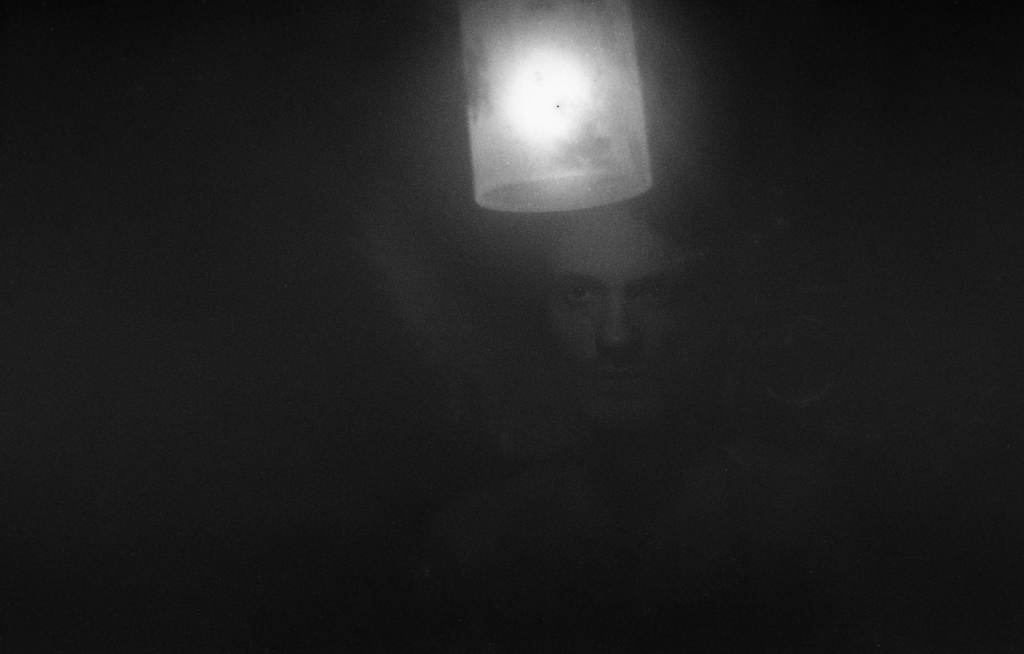
RELEASE INFORMATION

Mariano Gallardo Pahlen
『 Los Sueños de los Otros 』
ノスタルジックなのに新しい。記憶の中の美しい夏を感じさせる70年代的ノスタルジアなソングライティングと現代的なサウンドが融合したウルグアイ発オーケストラル・ポップの大傑作が世界初フィジカル化!
2021年6月2日発売 / LP入荷未定
品番:THCD580
レーベル : THINK! RECORDS
■世界初CD化
■ライナーノーツ:高橋健太郎
